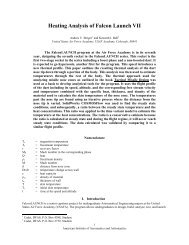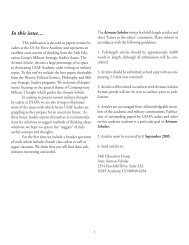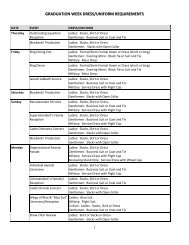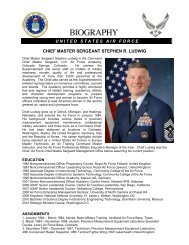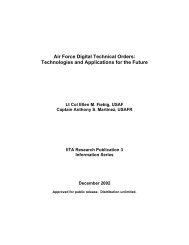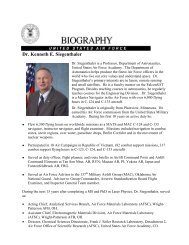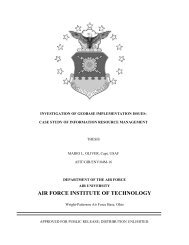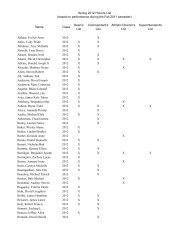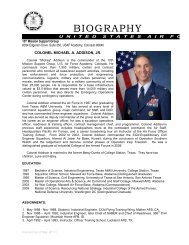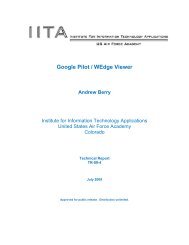the rollback of south africa's biological warfare program
the rollback of south africa's biological warfare program
the rollback of south africa's biological warfare program
You also want an ePaper? Increase the reach of your titles
YUMPU automatically turns print PDFs into web optimized ePapers that Google loves.
adio intercepts. 71 Cuban and Angolan army helicopters were shot down and<br />
were discovered to have had <strong>the</strong> capability to carry chemical agents. Soviet<br />
advisers captured gave evidence about CW use. In addition, fears rose that<br />
ANC/MK guerrillas might put BW agents in South African reservoirs. 72 The<br />
need for protective equipment, clothing and antidotes and for CBW strategy<br />
and tactics intensified. Gen. Geldenhuys ordered counter-measures and <strong>the</strong><br />
purchase <strong>of</strong> anti-CBW suits. P.W. Botha visited Angola and actually put on a<br />
suit. The cost for gear was expensive, especially gas masks, which were not<br />
reusable. Subsequently, Special Forces Gen. Liebenberg and Wouter Basson<br />
were investigated by <strong>the</strong> Office <strong>of</strong> Serious Economic Offenses (OSEO) in<br />
regard to 20 million rand in chemical <strong>warfare</strong> gear that was supposed to be<br />
delivered to UNITA.<br />
In Angola, <strong>the</strong> conflict reached a peak in October 1987, with <strong>the</strong> battle <strong>of</strong><br />
Cuito Cuanavale. While Cuba and <strong>the</strong> Angolan government claimed a great<br />
victory, over 5,000 government troops were killed and advanced SAMs (SA-<br />
8s) were captured by <strong>the</strong> SADF who, subsequently, gave <strong>the</strong>m to <strong>the</strong> U.S.<br />
According to David Steward, President de Klerk’s chief <strong>of</strong> staff, 1989-1994, 73<br />
Cuban and Angolan government forces used CW at Cuito Cuanavale and at<br />
Lomba River. A UNITA commander on <strong>the</strong> ground, Gen. Deon Ferreira,<br />
claimed that he saw a “flash in <strong>the</strong> sky,” which was indicative <strong>of</strong> a CW attack.<br />
Later, UNITA troops were evacuated to Pretoria with <strong>the</strong>ir hair falling out.<br />
Basson led <strong>the</strong> investigation and brought with him Dr. Heyndrickx from<br />
Ghent, Belgium. According to Gen. (ret.) Meiring, 74 o<strong>the</strong>r European scientists<br />
accompanied <strong>the</strong>m. Heyndrickx’s research project was done in loose<br />
collaboration with a clinic in Mavinga in sou<strong>the</strong>rn Angola that was staffed by<br />
SADF personnel. Subsequently, Heyndrickx, as well as <strong>the</strong> South African<br />
government, accused <strong>the</strong> Angolan government <strong>of</strong> using CW. However,<br />
Heyndrickx refused to allow findings that MPLA used poison gas on UNITA<br />
in <strong>the</strong> Angolan war to be reviewed by his peer. 75<br />
26




